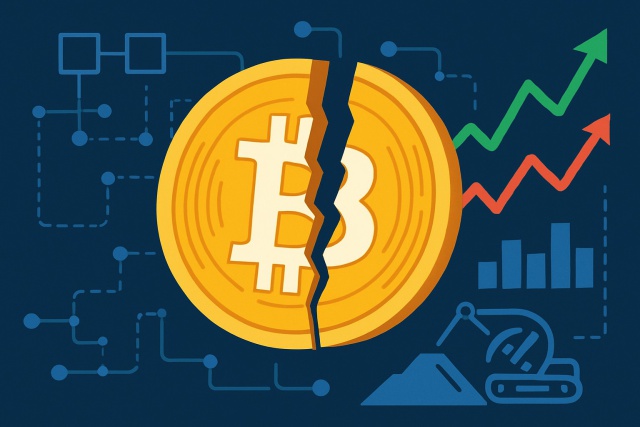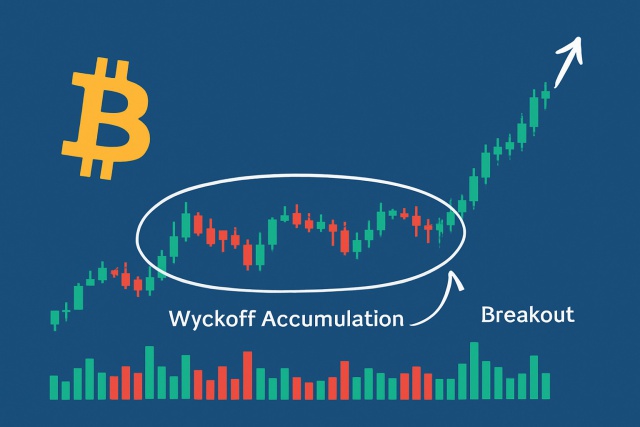Stock-to-Flow Bitcoin Model Explained Simply


The stock to flow bitcoin model has caught a lot of attention as a handy way to make sense of Bitcoin's price movements. It might seem a tad tricky at first glance, no surprise there.
What Does the Stock-to-Flow (S2F) Model Really Mean?
The stock-to-flow model comes from the world of precious metals like gold and silver where scarcity drives value. It measures scarcity by comparing the current stock—the total amount of the asset available—to the flow, which is the annual increase in supply. When the stock-to-flow ratio is high, the asset is scarce because new supply adds just a small amount compared to what already exists.
Scarcity often cranks up the value because people tend to crave what’s hard to come by. It’s a bit like those limited-edition collectibles that suddenly turn into prized possessions as they grow rarer.
Understanding How the Stock-to-Flow Model Ties Into Bitcoin
Bitcoin really stands out from the crowd because it has a fixed maximum supply capped at 21 million coins—no more and no less. New Bitcoins come into play through mining rewards that get slashed in half about every four years. This clever system slowly puts the brakes on new coin creation.
When it comes to Bitcoin the stock is simply the total number of coins that have been mined and are circulating at any given moment. The flow counts the new coins miners churn out each year. Every time a halving rolls around the flow gets slashed in half which causes the stock-to-flow ratio to shoot up noticeably. This basically shines a spotlight on how much scarcer Bitcoin becomes.
- Bitcoin has a total supply capped at 21 million coins, putting a firm lid on how many will ever exist.
- Mining rewards, known as block rewards, get sliced in half roughly every four years in an event called the halving.
- Each halving chops the yearly flow of new Bitcoins and usually helps keep inflation in check.
- As the annual supply trickles down, Bitcoin's stock-to-flow ratio climbs, signaling it’s becoming more scarce and precious.
- This cycle plays a subtle but vital part in shaping market expectations and often nudges long-term price growth.
Calculating Bitcoin's Stock-to-Flow Quick Guide
To wrap your head around the stock-to-flow ratio you simply take the total stock—that is all the coins already out there—and divide it by the annual flow which means the number of new coins mined over a year. Picture this: if there are 18 million Bitcoins floating around and only 0.9 million new ones added each year the stock-to-flow ratio clocks in at 20 since 18 million divided by 0.9 million equals 20. When a halving cuts that yearly supply down to 0.45 million the ratio naturally doubles to 40.
| Period | Bitcoin Stock (millions) | Annual Flow (millions) | Stock-to-Flow Ratio |
|---|---|---|---|
| Before Halving | 18 | 0.9 | 20 |
| After Halving | 18.45 | 0.45 | 41 |
| Next Halving | 18.9 | 0.225 | 84 |
Why the Stock-to-Flow Model Matters Big Time for Bitcoin
The stock-to-flow model really matters because it frames Bitcoin as a scarce asset with a supply that’s surprisingly predictable. Unlike the usual fiat currencies, which can be printed without end—sometimes feels like money’s growing on trees—Bitcoin’s scarcity is baked right into its design.
Investors and analysts often lean on this model to get a better handle on Bitcoin’s price swings, especially around those halving events when the supply tends to pinch tighter than usual.
The stock-to-flow model for Bitcoin keeps tabs on just how scarce this asset gets over time—kind of like watching your favorite rare collectible slowly disappear. That scarcity often nudges the price upward since fewer new coins hit the market while the existing stash becomes harder to come by.
Strengths and Limitations of the Stock-to-Flow Model
Let's dive into the stock-to-flow model—it's one of those tools that has sparked plenty of debate. On the one hand, it offers a neat way to think about scarcity and value, especially in the world of precious metals and cryptocurrencies like Bitcoin. You could say it distills complex economics into a relatively simple ratio, which is no small feat. However, while it is tempting to treat the model as a crystal ball, we have got to remember that it has its quirks and blind spots. Sometimes reality throws curveballs that the model just cannot catch. So, like with any model, it is best to appreciate its insights but keep a healthy dose of skepticism handy.
- The model’s straightforward nature makes it a breeze for users to wrap their heads around Bitcoin scarcity using simple math.
- It leans on core scarcity economics, a time-tested way to value assets.
- Historically, Bitcoin’s price has tended to follow patterns that roughly line up with shifts in stock-to-flow though it’s never a perfect match.
- The model doesn’t factor in demand fluctuations that can throw a wrench into price movements.
- It also tends to overlook wild price swings sparked by external events or new regulations or sudden changes in investor mood.
- The idea that adoption will keep growing at a steady clip doesn’t always pan out so predictions should be taken with a grain of salt.
Many individuals often jump to the conclusion that the stock-to-flow model can pinpoint Bitcoin’s future price with uncanny accuracy or that the price will inevitably jump after each halving. In reality, it’s more of a broad brushstroke—a framework built around supply scarcity while shifts in demand, new tech breakthroughs and changing economic tides play a starring role as well. Leaning too hard on this model for exact price predictions can lead you down a tricky path.
A Few Time-Tested Examples from History and Everyday Life
Bitcoin price cycles often seem to dance in step with rising stock-to-flow ratios, especially after those halving events roll around. During these periods, scarcity doesn’t just increase quietly—it makes its presence felt alongside some pretty noticeable price jumps.

The model has generally held up well over time although there have been a few moments when Bitcoin's price marched to its own beat instead of following the predictions. These hiccups usually happen due to sudden demand shocks or regulatory curveballs or bigger economic waves crashing in.
Using the Stock-to-Flow Model with Care A Little Caution Goes a Long Way
The stock-to-flow Bitcoin model is just one piece of the puzzle when sizing up stock to flow bitcoin analysis.
- It’s usually smart to pair stock-to-flow analysis with fundamental or technical research to get a fuller picture.
- Keep a close watch on real-time market trends and news because outside factors often throw price movements for a loop.
- Don’t put all your faith in the stock-to-flow ratio as a magic crystal ball or a surefire investment guide.
- Make sure you update your calculations regularly, especially after halvings or big events. Otherwise, you might be flying blind.
- Always be mindful of risks like wild volatility, sudden regulatory shifts, and changing market conditions.
Useful Links
Start Your Crypto Journey with Coinbase Today
Ready to enter the cryptocurrency market but unsure where to begin? Coinbase makes buying, selling, and storing digital assets simple and secure for beginners and experts alike.








